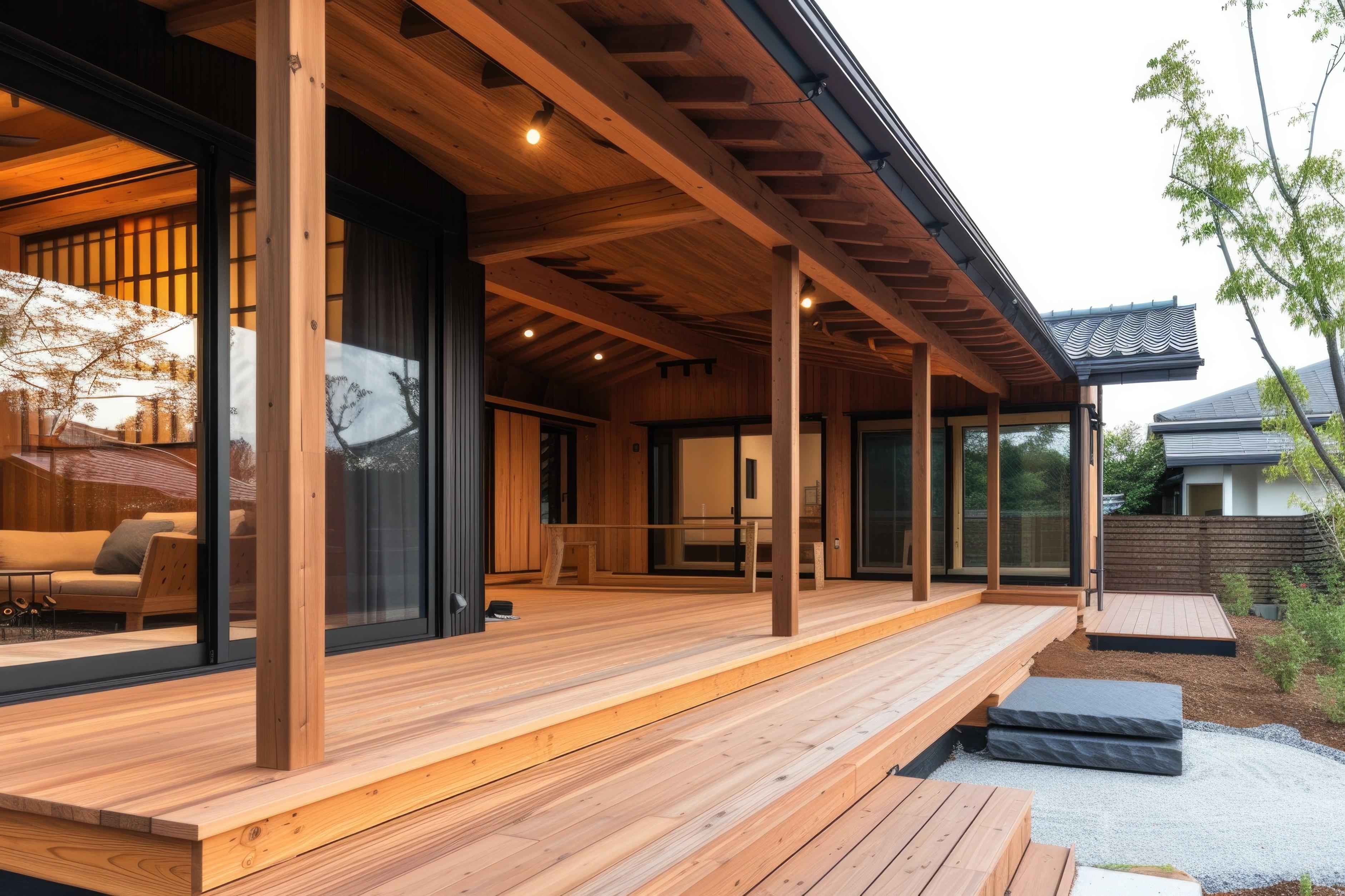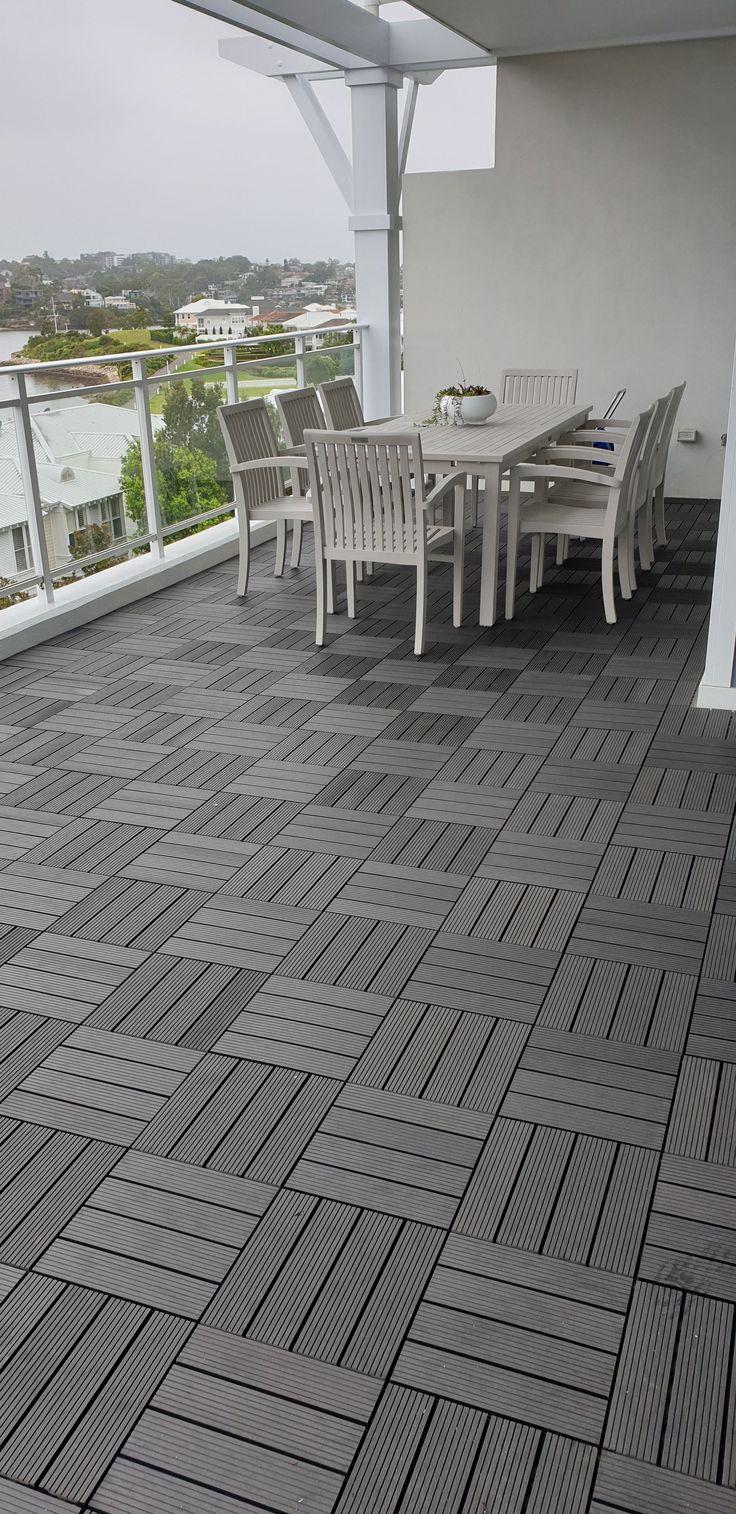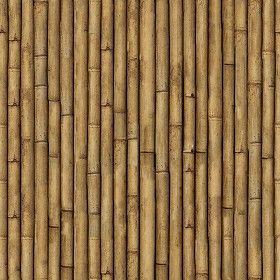



Table of Contents
- What is Wood Decking?
- Key points about wood decking:
- Pros of Wood Decking:
- Cons of Wood Decking:
- What is Composite Decking
- Key features of composite decking include:
- Pros of Composite Decking:
- Cons of Composite Decking:
- What is Bamboo Decking?
- Benefits of Bamboo Decking
- Disadvantages of Bamboo Decking
- Consider Your Budget
- The most affordable decking materials available in India are:
- Evaluate Durability and Maintenance
- Consider Appearance and Customisation
- Prioritising Safety and Traction in Decking Materials
- Evaluate Environmental Impact
- Consult with Professionals
- Conclusion
- Faq's
When it comes to creating an inviting and functional outdoor living space, choosing the right decking material is crucial. With a wide range of options available, each with its own unique benefits and drawbacks, it can be overwhelming to decide which material best suits your needs and preferences.
In this comprehensive guide, we'll explore the key factors to consider when selecting a decking material, from budget and durability to appearance and safety, to help you make an informed decision for your dream deck.
What is Wood Decking?
Wood decking refers to the use of wooden planks or boards to create an outdoor deck or patio surface. It is one of the most common and traditional materials used for decking projects.

Key points about wood decking:
- It is made from either softwood (e.g. pine, cedar) or hardwood (e.g. ipe, teak) lumber.
- Pressure-treated wood is a popular choice as it is long-lasting and holds up well to wet and icy weather conditions, though it is treated with chemicals.
- Both softwood and hardwood decks require finishing after installation using an oil or varnish to prevent weathering, wear, mold, algae and insect damage.
- Untreated wood decking can last 10-30 years, while pressure-treated or hardwood decking can last 50 years or more with proper maintenance.
- Wood decking offers a classic, natural look that can be stained or painted to match preferences. However, it requires more upkeep than some other decking materials.
- Pressure-treated wood is typically the most affordable decking option, with prices ranging from ₹1,000 to ₹2,000 per square meter (₹100 to ₹200 per square foot) in India.
- Wood decking provides a timeless aesthetic and is a budget-friendly choice, but requires regular maintenance to ensure its longevity. Pressure-treated and hardwood varieties offer the most durability.
Pros of Wood Decking:
- Natural, authentic look and feel that can be stained or painted to match preferences
- Typically more affordable upfront, especially pressure-treated softwoods
- Easier to work with and install, requiring lower labor costs
- Redwood and cedar are less prone to warping and more resistant to rot and insects
- Flexible and easy to cut into new styles and layouts
- High-quality hardwood decking can last over 40 years with proper maintenance
Cons of Wood Decking:
- Requires regular maintenance like staining, sealing, cleaning to prevent weathering and damage
- Prone to warping, splitting, cracking and splintering if not properly maintained
- Softer woods scratch and stain easily
- Shorter lifespan of 10-20 years for pressure-treated and softwood decking
- High maintenance can be expensive and time-consuming
- Hardwood options have higher material and labor costs
- Involves cutting down trees, so sourcing environmentally-friendly wood requires research
Wood decking offers a classic, natural look at a lower upfront cost, but requires more maintenance to prevent damage and ensure longevity compared to composite decking. The type of wood used also greatly impacts durability and cost.
What is Composite Decking
Composite decking is a modern, low-maintenance alternative to traditional wood decking. It is made from a blend of wood fibers, recycled plastics, and binding agents that are combined under heat and pressure to create durable, uniform decking boards.

Key features of composite decking include:
Durability - Composite decking is highly resistant to rot, insects, fading, and weathering, lasting much longer than wood.
Low maintenance - Composite decking requires minimal upkeep, just occasional cleaning, with no need for staining, sealing or painting.
Slip-resistance - Composite decking has a textured, slip-resistant surface, even when wet, making it safer than wood decking.
Customisation - Composite decking comes in a wide range of colors and styles to match any aesthetic, unlike the more limited options for wood.
Eco-friendliness - Many composite decking products are made from recycled materials, making them a more sustainable choice.
Pros of Composite Decking:
Low maintenance
Composite decking requires minimal upkeep, just occasional cleaning, with no need for staining, sealing or painting .
Durability
Composite decking is highly resistant to rot, insects, fading, and weathering, lasting much longer than wood .
Safety
Composite decking has a textured, slip-resistant surface, even when wet, making it safer than wood decking .
Customisation
Composite decking comes in a wide range of colors and styles to match any aesthetic, unlike the more limited options for wood .
Environmentally friendly
Many composite decking products are made from recycled materials, making them a more sustainable choice .
Cons of Composite Decking:
Higher initial cost
Composite decking is generally more expensive to purchase than wood decking, though it may pay for itself over time .
Artificial appearance
Some find composite decking lacks the authentic, natural look and feel of real wood .
Limited repair options
It is more difficult to repair or replace individual composite decking boards compared to wood .
Heat absorption
Composite decking can become quite hot in direct sunlight, though newer technologies are helping mitigate this .
Composite decking offers greater durability, low maintenance, and design flexibility, but at a higher upfront cost and potentially less natural aesthetic compared to traditional wood decking
What is Bamboo Decking?

Benefits of Bamboo Decking
- Bamboo decking, such as Choclate Bamboo Decking, is available at prices around ₹787 per square foot, making it a cost-effective choice.
- Bamboo is a highly renewable and sustainable material, as it grows quickly and can be harvested without killing the plant.
- Bamboo decking is considered an environmentally-friendly option compared to traditional wood
- Bamboo is a very strong and durable material, comparable to many hardwoods in terms of strength and resistance to weathering.
- With proper maintenance, bamboo decking can last for many years.
- Bamboo decking has a natural, warm aesthetic that can complement a variety of outdoor design styles.
- The unique grain patterns and color variations of bamboo add visual interest to the deck.
Disadvantages of Bamboo Decking
Bamboo decking may not be as widely available as other options like wood or composite, especially in certain regions. The selection of bamboo decking products and styles may be more limited compared to other materials.
While bamboo is a durable material, it can still be susceptible to warping, cracking, or splitting if not properly installed and maintained. Exposure to moisture and fluctuations in temperature can cause bamboo to warp over time.
To keep bamboo decking looking its best and prevent damage, it requires regular cleaning, sealing, and staining, similar to wood decking. This ongoing maintenance can be time-consuming and costly.
The natural color of bamboo decking may fade over time when exposed to direct sunlight. This can alter the appearance of the deck if not properly maintained with sealants or stains.
While bamboo decking is more affordable than exotic hardwoods, it may still be more expensive than pressure-treated wood or composite decking in some cas
While bamboo decking can be treated to have a textured, slip-resistant surface, it may not provide as much traction as some other materials like exposed aggregate concrete or aluminum decking, especially when wet. This increases the risk of slips and falls if proper precautions are not taken.
If not properly maintained and finished, bamboo decking can develop sharp edges or splinters that pose a safety hazard, particularly for bare feet. Regular inspection and sanding of the surface is important to prevent this.
Consider Your Budget
- When it comes to decking materials
- The cost can range widely from around Rs 1,000 to Rs 4,500 per square meter (Rs 100 to Rs 420 per square foot).
- Pressure-treated wood is typically the most affordable option, with prices ranging from Rs 1,000 to Rs 2,000 per square meter (Rs 100 to Rs 200 per square foot).
- On the other hand, exotic hardwoods like Ipe and Bamboo tend to be the most expensive, costing between Rs 2,200 to Rs 4,500 per square meter (Rs 200 to Rs 420 per square foot).
- Composite decking falls in the middle, with an average cost of Rs 2,700 to Rs 4,000 per square meter (Rs 250 to Rs 375 per square foot).
It is important to note that the decking material itself is just one part of the total deck project cost, which also includes the frame, railings, stairs, labor, and permits. So, when budgeting for your deck, be sure to factor in all these additional expenses to get an accurate estimate.

The most affordable decking materials available in India are:
Pressure-treated wood: Prices range from ₹1,000 to ₹2,000 per square meter (₹100 to ₹200 per square foot), making it the most budget-friendly option.
Wood plastic composite (WPC) decking: Also known as composite decking, this material falls in the middle price range, costing between ₹2,700 to ₹4,000 per square meter (₹250 to ₹375 per square foot). It is a more affordable alternative to exotic hardwoods.
Bamboo decking: Bamboo decking, such as Chocolate Bamboo Decking, is available at prices around ₹787 per square foot, making it a cost-effective choice.
When choosing a decking material, it's important to consider not only the initial cost but also the long-term maintenance and durability. While pressure-treated wood is the most budget-friendly option upfront, composite decking may be more cost-effective in the long run due to its low maintenance requirements and longer lifespan.
Evaluate Durability and Maintenance
Different decking materials have varying levels of durability and maintenance requirements. Composite and PVC decking are highly resistant to rot, insects, and fading, and require minimal maintenance. Aluminum decking is also extremely durable, weather-resistant, and easy to care for. Wood decking, on the other hand, may require regular staining, sealing, or painting to prevent weathering and damage.
Consider Appearance and Customisation
The look of your deck is an important factor to consider. The appearance and how you customise it can greatly impact the overall aesthetic of your outdoor living space. When selecting a decking material, it's important to consider how it will complement the style and design of your home and surrounding landscape.
Wood decking offers a classic, natural look that can be stained or painted to match your preferences. The warm tones and grains of wood create a timeless, inviting atmosphere. Homeowners can choose from a variety of wood species, each with its own unique characteristics and visual appeal.
Composite decking, on the other hand, provides a wider range of color and texture options. These man-made materials can mimic the appearance of wood while offering a more uniform and contemporary look. Composite decking comes in a diverse palette of colors, from natural wood tones to bold, vibrant hues, allowing for greater design flexibility.
For a more modern, industrial aesthetic, aluminum decking is a sleek and customizable option. Aluminum can be powder-coated in a variety of colors and finishes, from smooth and glossy to textured and matte, to suit your personal style.
Ultimately, the appearance and customization potential of decking materials play a crucial role in creating an outdoor living space that reflects your unique taste and complements the overall design of your property.
Prioritising Safety and Traction in Decking Materials

When it comes to outdoor decking, safety should be the top priority. Selecting materials that provide good traction and slip-resistance is crucial to prevent accidents, especially in wet or damp conditions.
Exposed aggregate concrete decking is an excellent option for enhancing traction and safety. The exposed aggregate surface creates a textured, non-slip finish that offers superior grip underfoot. The small stones or pebbles embedded in the concrete provide increased friction, making the surface less slippery even when wet. This makes exposed aggregate concrete a popular choice for areas prone to moisture, such as around pools or hot tubs.
Aluminum decking is another material known for its slip-resistant properties. The metal surface can be manufactured with a variety of textured finishes, including diamond plate, fluted, or perforated patterns. These textures create a high-traction surface that minimizes the risk of slips and falls. Aluminum decking is also durable, weather-resistant, and requires minimal maintenance, making it a practical and safe choice for outdoor living spaces.
When selecting a decking material, it's important to consider not only the aesthetic appeal but also the safety features. By choosing options with enhanced traction, you can create an outdoor living space that is both visually appealing and safe for you, your family, and your guests.
Evaluate Environmental Impact
If you're concerned about the environmental impact of your deck, consider using eco-friendly materials like bamboo or recycled plastic and wood composites. These options often use sustainable manufacturing processes and recycled materials in their production.
Consult with Professionals
When in doubt, consult with decking professionals, such as contractors, architects, or designers, to help you make the best decision for your specific project and needs. They can provide valuable insights and recommendations based on their expertise and experience.
Conclusion
In conclusion, choosing the right decking material requires careful consideration of your budget, durability needs, maintenance preferences, desired appearance, and safety requirements. By weighing these factors and consulting with professionals, you can select the best decking material for your dream outdoor living space.
Choosing the right decking material requires careful consideration of various factors, including your budget, durability needs, maintenance preferences, desired appearance, and safety requirements. By weighing these factors and consulting with professionals, you can select the best decking material for your specific project and create an outdoor living space that is both visually appealing and safe for you, your family, and your guests.
Whether you opt for the classic look of wood, the low-maintenance convenience of composite, or the modern aesthetic of aluminum, the key is to prioritize your needs and preferences to ensure a deck that will serve you well for years to come. With the right decking material and proper installation, you can transform your outdoor area into a beautiful and functional extension of your home, perfect for entertaining, relaxing, and enjoying the great outdoors.
explore further
Latest from Contemporary ideas
More from Innovations
Resources
Dwello, for every home buyer, is a way to go from 'I feel' to 'I know', at no extra cost.




